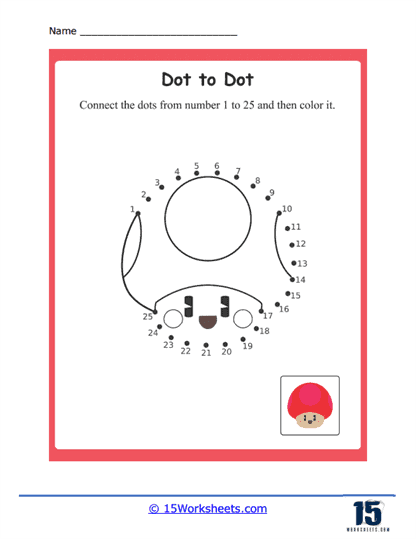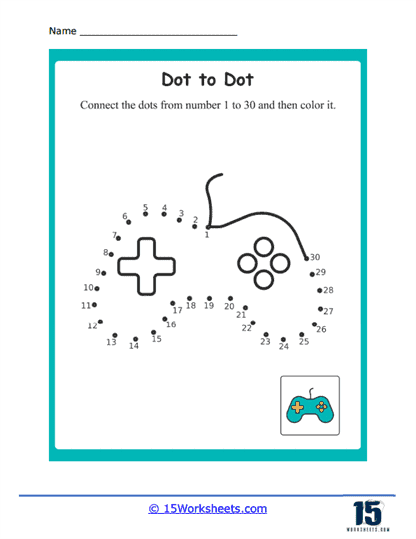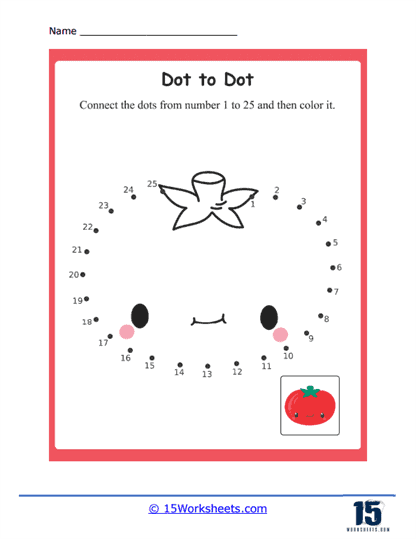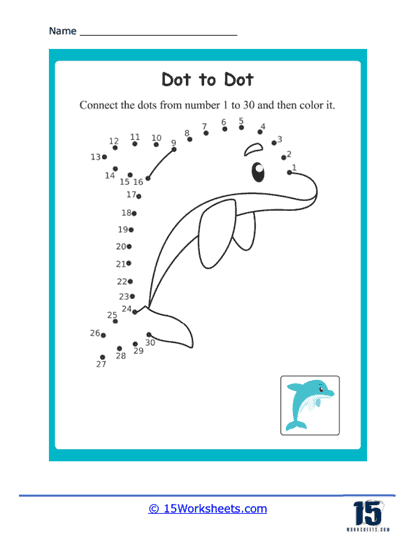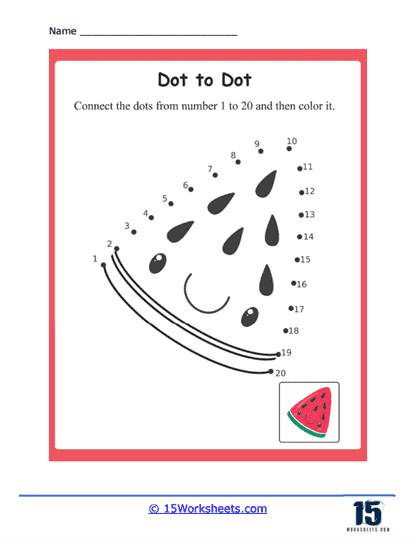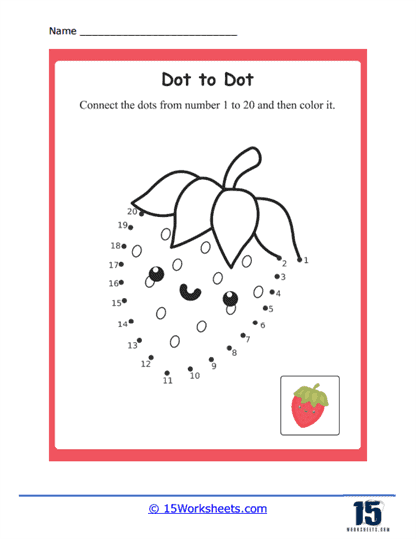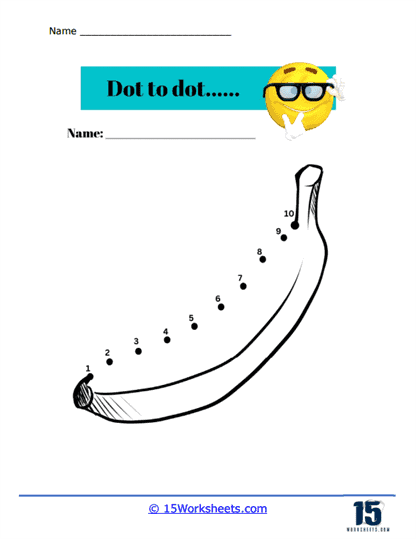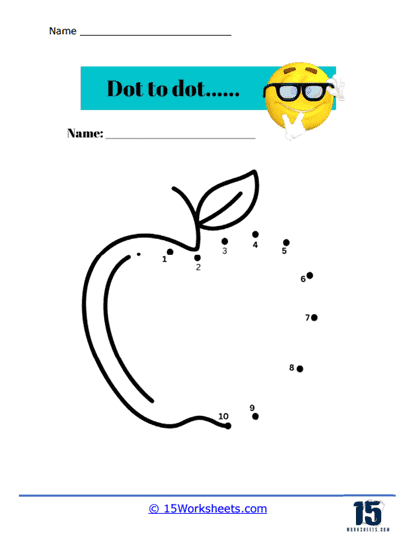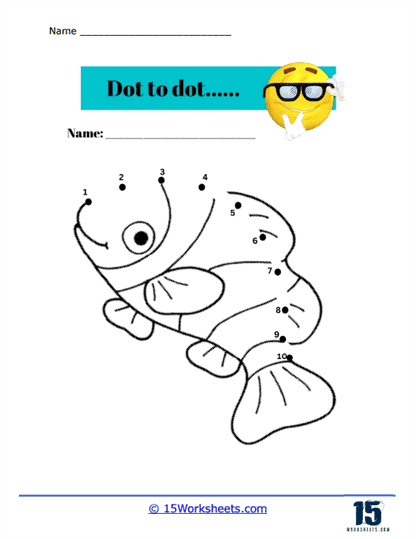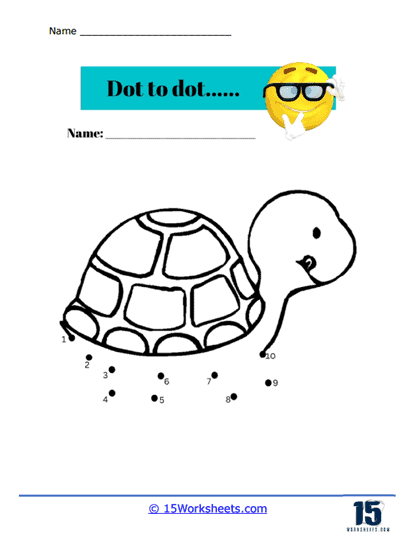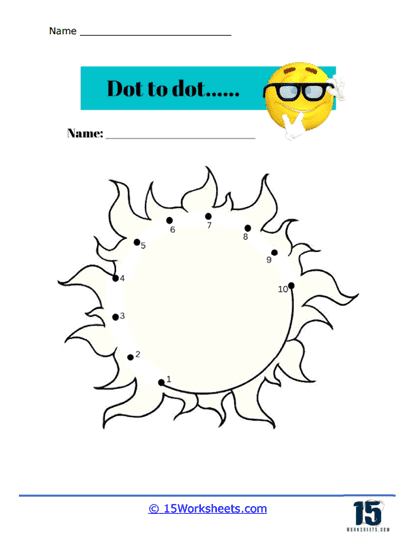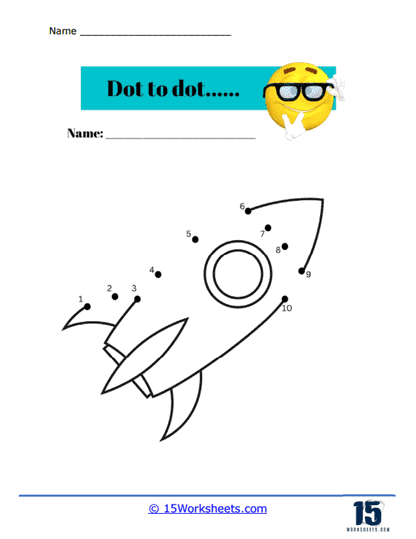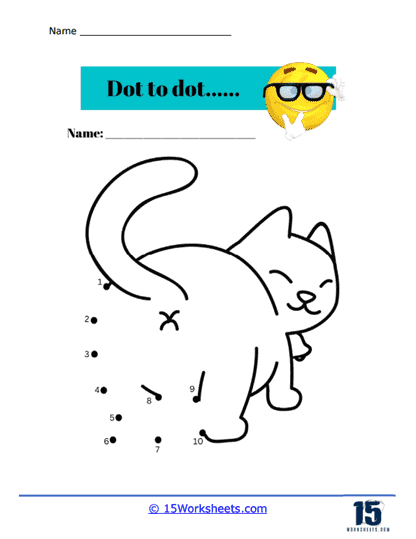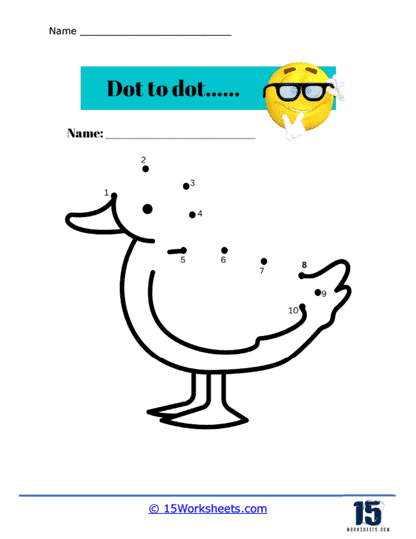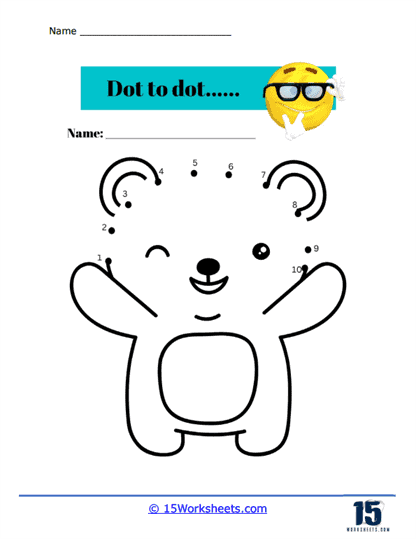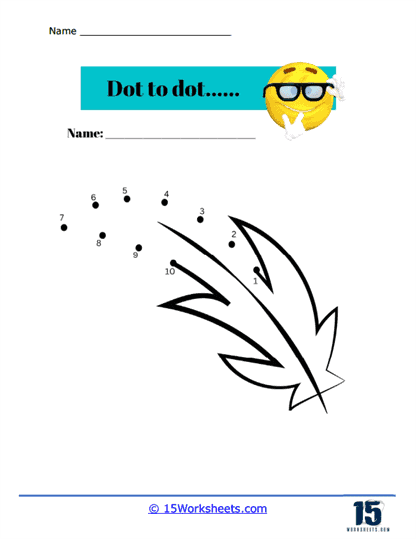Connect the Dots Worksheets
About These 15 Worksheets
Connect the Dots worksheets are more than just a bunch of numbered dots and distracted kids with pencils-oh no, they’re secret agents of learning in disguise. On the surface, students might think they’re just outlining dessert treats like Dessert Brownies, Sandwich Wedge, and French Fries-but really, these sheets are training their number sequencing skills, fine motor precision, and future careers as Michelin-starred chefs. Imagine a kid earnestly connecting dots to form a stack of brownies, unaware they’re actually sharpening the same skills required to decode ancient scrolls or untangle holiday lights. These food-themed worksheets sneakily build numerical order and attention to detail, proving once and for all that lunch and learning can coexist harmoniously.
Now picture a collection of animals popping off the page as your pencil swooshes from dot to dot. Enter the adorable crew: Piggy, Stare Bear, Panda Bear, Unicorn, Happy Mushroom, Dolphin, Puppy Paw, Slow and Steady Turtle, Purr-fect Kitty, Quack-tastic Duckling, and Bear-y Cute. These lovable creatures develop both numerical fluency and a deep sense of wonder. The Unicorn alone brings a sprinkle of magic to math class, while Puppy Paw and Purr-fect Kitty inspire kids to draw carefully-not out of duty, but out of love for their squishy dot-to-dot companions. It’s all very scientific, of course: cuteness enhances memory retention. Don’t quote me on that, but you felt it, didn’t you?
Meanwhile, some of these worksheets are for students with bigger dreams-space travel, deep-sea exploration, or just a sweet ride. They’ll find inspiration in Blast Off Rocket, Zooming Car, Automobile, Video Game Controller, and Sailing Adventure. These aren’t just pictures-they’re doorways to imaginative play. As students draw a rocket ship from dots 1 to 30, they aren’t just counting; they’re preparing for lift-off into orbital mathematics. The Video Game Controller sheet? It doesn’t just test numbers, it trains them for symmetrical layout design and future multiplayer diplomacy. These sheets offer an invitation to dream in pixels and gears and sailboats and wheels.
The worksheets also present a vibrant tribute to the natural world through fruit and sunshine. Yes, learning is sweet and full of vitamins with Happy Tomato, Watermelon Slice, Strawberry, Banana Bash, Crunchy Apple, and the sunny Radiant Sun. These offer more than a nutritious visual reward-they’re a subtle lesson in shapes, curves, and proportions. Try connecting the dots on Banana Bash and not feeling joy-impossible. It’s a study in elliptical form, basic biology, and snack-based geometry. The Radiant Sun, on the other hand, reminds kids that math is literally everywhere-even in the sky, shining down with trigonometric optimism.
We have the more abstract and whimsical entries-call them the “dot philosophers.” Swirls and Twirls, Feather Flurry, Hoppy Frog, and Fintastic Fish test kids’ patience, dexterity, and ability to accept that sometimes the image doesn’t make sense until the very last dot. These pages are meditative. Swirls and Twirls is basically yoga for your fingers. Feather Flurry is a gentle lesson in controlled chaos. And Fintastic Fish? It’s fishy, yes, but deeply symbolic. All in all, this eclectic collection isn’t just about connecting the dots. It’s about connecting curiosity with structure, giggles with growth, and numbers with meaning-one whimsical image at a time.
How Connecting the Dots Helps You
Connect the Dots worksheets, often associated with early childhood education, serve as more than just a playful activity; they are a foundational tool in developing fine motor skills. By guiding a pencil from one numbered dot to the next, individuals strengthen hand-eye coordination and practice controlled, precise movements. This seemingly simple exercise enhances dexterity and muscle memory, which are essential not only for writing but also for tasks like buttoning clothing or using utensils. For young children, particularly those in preschool or kindergarten, Connect the Dots offers an engaging way to develop the physical coordination needed for academic and daily life success.
Beyond motor skills, these worksheets also bolster cognitive development. By following sequential numbers or alphabet letters, users reinforce their understanding of counting, number order, or letter recognition. This supports early numeracy and literacy, making Connect the Dots a valuable educational tool in early learning environments. For older children or adults with learning differences or developmental delays, these worksheets can be adapted to provide a structured yet enjoyable method for practicing foundational academic skills in a low-pressure setting. In this way, they cater to a wide range of learning needs while maintaining accessibility.
These types of activities promote concentration and patience, skills that are beneficial at any age. Completing a picture requires sustained focus, attention to detail, and the ability to see a task through to completion. For adults, especially those looking to reduce stress or re-engage their focus in a screen-saturated world, these worksheets can act as a form of mindful relaxation-similar to coloring books. The act of drawing a familiar image gradually from a sequence of dots offers a satisfying sense of progress and achievement that can calm the mind and improve emotional well-being.
The versatility of Connect the Dots makes them valuable across generations. They can be used in therapeutic settings for stroke recovery or age-related cognitive decline, helping patients rebuild neural pathways through repetitive, goal-oriented tasks. For seniors, they offer a nostalgic yet stimulating way to stay mentally and physically active. Whether used in classrooms, homes, clinics, or senior centers, Connect the Dots worksheets are a unique blend of fun and function that support lifelong learning and development. Their simplicity belies their effectiveness, making them a timeless tool for growth at every age.









